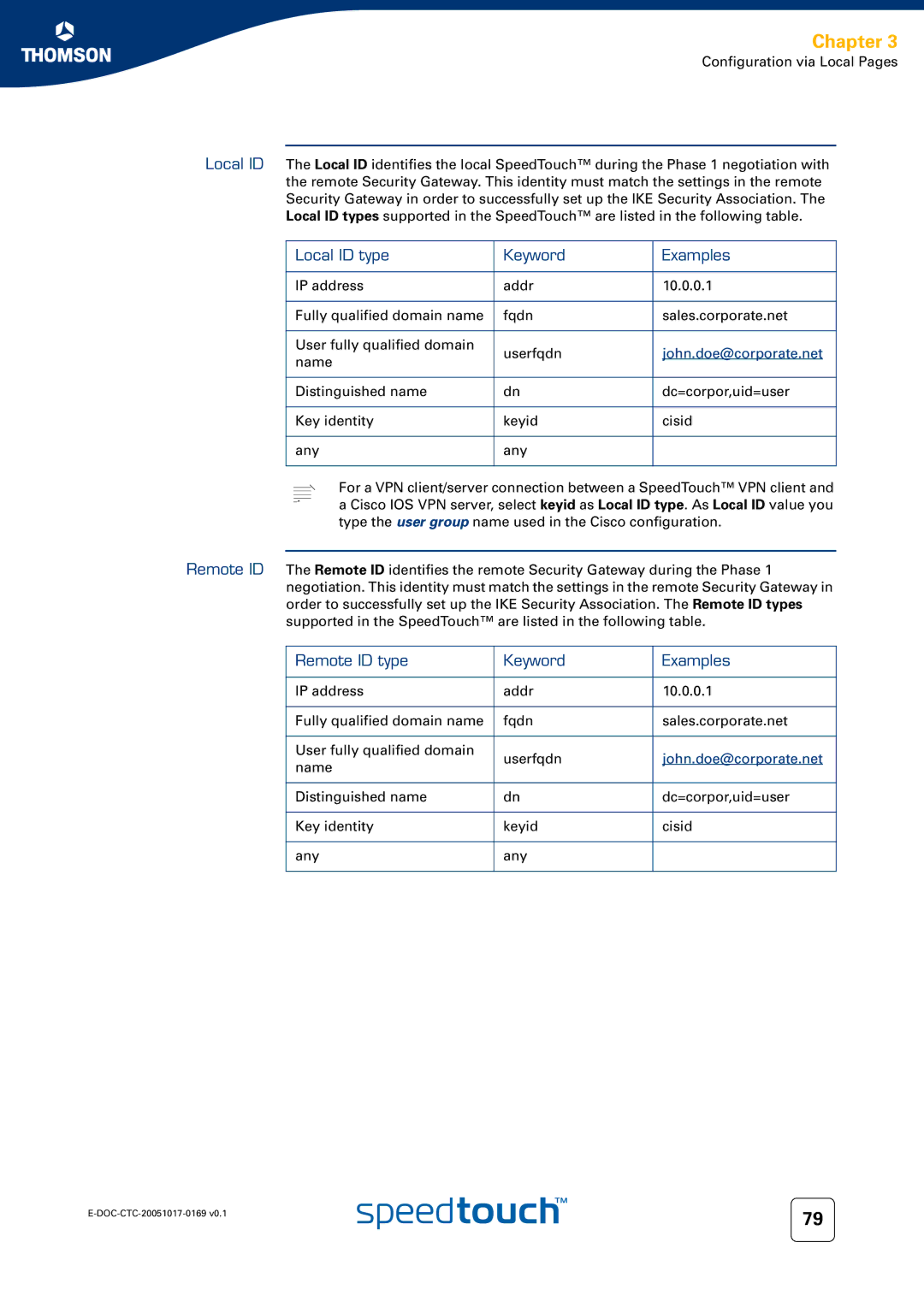
Chapter 3
Configuration via Local Pages
Local ID The Local ID identifies the local SpeedTouch™ during the Phase 1 negotiation with the remote Security Gateway. This identity must match the settings in the remote Security Gateway in order to successfully set up the IKE Security Association. The Local ID types supported in the SpeedTouch™ are listed in the following table.
Local ID type | Keyword | Examples | |
|
|
| |
IP address | addr | 10.0.0.1 | |
|
|
| |
Fully qualified domain name | fqdn | sales.corporate.net | |
|
|
| |
User fully qualified domain | userfqdn | john.doe@corporate.net | |
name | |||
|
| ||
|
|
| |
Distinguished name | dn | dc=corpor,uid=user | |
|
|
| |
Key identity | keyid | cisid | |
|
|
| |
any | any |
| |
|
|
|
For a VPN client/server connection between a SpeedTouch™ VPN client and a Cisco IOS VPN server, select keyid as Local ID type. As Local ID value you type the user group name used in the Cisco configuration.
Remote ID The Remote ID identifies the remote Security Gateway during the Phase 1 negotiation. This identity must match the settings in the remote Security Gateway in order to successfully set up the IKE Security Association. The Remote ID types supported in the SpeedTouch™ are listed in the following table.
Remote ID type | Keyword | Examples | |
|
|
| |
IP address | addr | 10.0.0.1 | |
|
|
| |
Fully qualified domain name | fqdn | sales.corporate.net | |
|
|
| |
User fully qualified domain | userfqdn | john.doe@corporate.net | |
name | |||
|
| ||
|
|
| |
Distinguished name | dn | dc=corpor,uid=user | |
|
|
| |
Key identity | keyid | cisid | |
|
|
| |
any | any |
| |
|
|
|
79 | |
|
